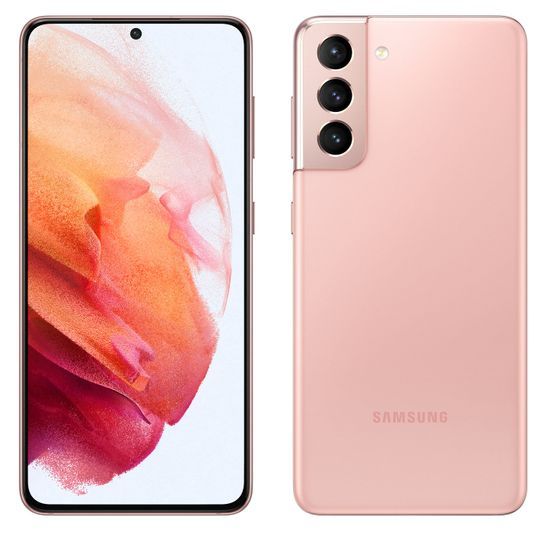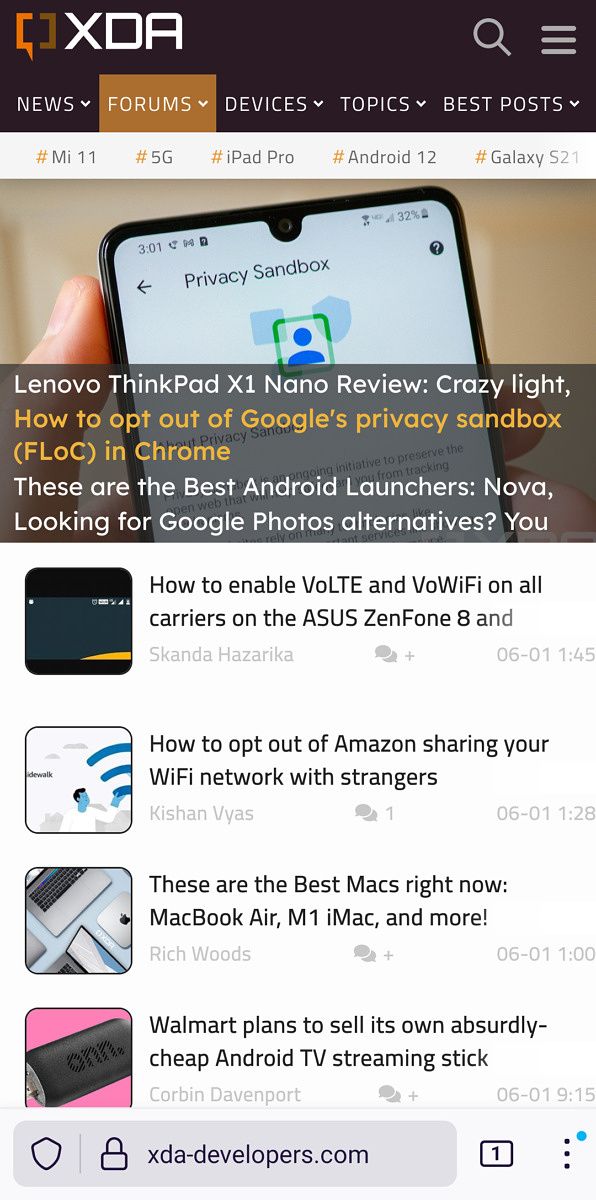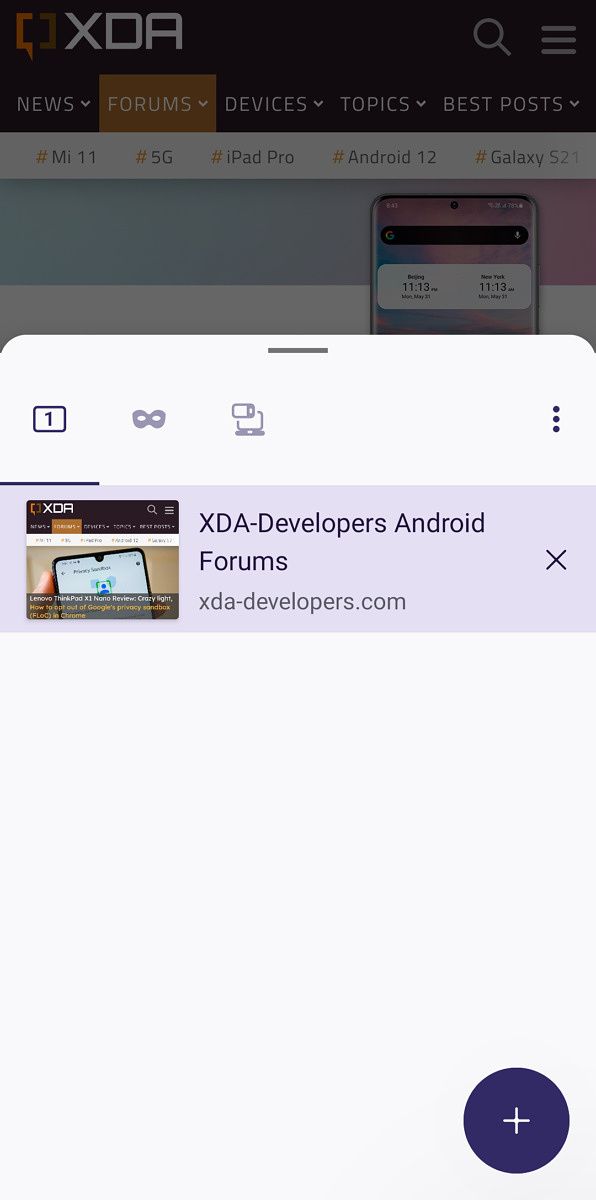If you’re planning to buy a new smartphone, finding a device that fits your budget is not difficult. But choosing amongst some of the best phones can be a little difficult if you’re hoping to use it with a flexible carrier plan. Google Fi is a virtual network operator that offers such flexibility, with support for unlocked phones ranging from budget up to the top flagships. While Google Fi is said to work on every iOS and Android device regardless of whether they are cheap or expensive, certain features that the MVNO offers are limited to those certified for use with the network. Hence, this article consists of a list that we think are the best options to consider for Google Fi since they can make the best use of the plans and features offered.
Navigate this guide:

If you’re looking for a smartphone experience that does not compromise much in the way of specifications, while still hoping to make the most of your Google Fi plan, the Galaxy S21 Ultra is a tough choice to beat. While its version of Android isn’t the cleanest, if you compare the performance and feature set offered by the other devices on this list, this Samsung flagship does stand out.
With a Snapdragon 888 processor, a 6.8-inch WQHD+ Dynamic AMOLED display with a variable refresh up to 120Hz, and a four-sensor camera array headlined by a 108 MP shooter, this device will never let you down, especially with its 5000 mAh battery.
The Samsung Galaxy S21 Ultra is a device that packs in one of the best displays available, a powerful SoC, a versatile camera array, and the bells and whistles of a flagship smartphone in a premium build.

If the Galaxy S21 Ultra’s price tag is a little hard to stomach, the Galaxy S21 makes for a pretty good alternative. While the only component that it shares with the Ultra is its processor, the rest of its parts are mostly par for the course.
The Snapdragon 888 in this device powers a 6.2-inch FHD+ 120Hz Dynamic AMOLED display (with adaptive refresh rate) and handles the image processing from a triple camera system. You’ll also find a 4000 mAh battery within the polycarbonate chassis of this device, capable of wireless charging and fast charging speeds of up to 25W.
If the S21 Ultra is too big for you, or perhaps you're not looking to spend as much, the S21 makes certain compromises but still provides a similar camera performance and user experience. Although, you may miss the more premium materials used in the Ultra.
Best Camera for Photos: Google Pixel 5

While Google has made flagship devices before, most of us know that they weren’t without issues. With the Pixel 5, the software company simplified its offering and mixed and matched components to reach a modest price tag for the best point-and-shoot smartphone camera that offers enough performance for day-to-day use.
The Pixel 5 features a 90Hz, FHD+ OLED display powered by a Snapdragon 765G, supported with a 4080 mAh battery. As mentioned before, this device can pull through a whole day for most users, but its stand-out feature is the rear camera system. The 12MP wide sensor and 16MP ultra-wide pair showcase Google’s control over camera algorithms. Also, another bonus is that Pixel devices are first in line to receive the latest Android updates.
If you are on the lookout for an easy point-and-shoot experience, Google Pixel 5 offers one of the best. Its hardware is par for its cost, and the phone is first in line for the latest Android updates.
Best Endurance: Moto G Power (2021)

If you are someone whose primary use for a smartphone involves quite a bit of social media scrolling and having the best display around isn’t the highest priority, the Moto G Power 2021 might be a great pick. The device also offers one of the cleanest Android experiences after the Pixel line.
With an HD+ LCD panel and Snapdragon 662, both of which are components that will just about sip on a battery, this phone is capable of being titled an endurance champ with its 5000 mAh cell. Keep in mind, the processor on this device is serviceable but might struggle under heavy loads.
The Moto G Power couples a 5000mAh battery with the Snapdragon 662 to make it a smartphone capable of all-day battery life, perfect for someone on their feet and whose usage does not involve heavy gaming or apps.
The Balanced Option: Samsung Galaxy A71 5G

While not quite the looker, this offering from Samsung is for users who prefer to have a large display but would rather not spend extra to get a Galaxy S21+. It offers a decent mixture of performance and hardware similar to other devices in its price range.
The Galaxy A71 5G has a 6.9-inch FHD+ sAMOLED panel powered by a Snapdragon 765G and a 4500 mAh cell. These specifications make it perfect for heavy users. With Samsung’s One UI 3.0 and a capable quad-camera setup headlined by a 64MP sensor, this device is an option for those looking at mid-tier phones in search of a jack of all trades.
The highest-end model from the A-Series, Samsung Galaxy A71 5G, is a smartphone that packs in enough features that make it worth its price. Powered by a Snapdragon 765G, this phone shouldn't struggle in most demanding tasks and comes with a camera setup capable of taking great pictures.
The Best Budget Camera: Google Pixel 4a

The Pixel 4a is a simple-looking device with what is arguably the best camera at its price point. Like the Pixel 5, it mixes and matches a set of specifications that can very well justify its price tag. The phone offers the cleanest software experience compared to its competitors and is also first in line to receive Android updates like all phones from Google.
It comes with a 5.8-inch FHD+ OLED panel that doesn’t compromise on quality. Powered by a Snapdragon 730G and a 3140 mAh cell, this device is good enough for day-to-day tasks, but the processor’s lack of power is visible when you have to wait a few seconds for the 12 MP images to process. Although, the images produced are almost always worth the wait.
The Google Pixel 4a might be a simple-looking phone, but it brings a flagship-level camera and guarantees the latest version of Android with a low price barrier.
The Stylus Option: Samsung Galaxy Note 20 Ultra

Last year’s Galaxy Note 20 Ultra is arguably still a top performer in 2021. First made available in October 2020, the device is a little over half a year old, with a Snapdragon 865+ powering its WQHD+ Super AMOLED 120Hz display supported by a 4500 mAh battery and a 108 MP sensor similar to the one in S21 Ultra, it can compete with the top performers on this list.
The addition of the S-Pen with its dedicated silo also makes a good case for users who want quick access to a stylus. While the Galaxy S21 Ultra does support the use of this tool, you will have to deal with the hassle of carrying it around or buying a dedicated case giving the Note an advantage due to design.
The Samsung Galaxy Note 20 Ultra is a phone that the S21 Ultra takes several cues from, so if you're looking for a similar package with a stylus that's convenient to use and at your disposal, this is the phone to pick.
Google’s Budget 5G Option: Google Pixel 4a 5G

While you may think Pixel 4a 5G is just a 5G capable version of the 4a, that’s not the case. Not only does this device bring support for the new generation of mobile networks, but it also comes with a larger 6.2-inch FHD+ OLED panel, a 16 MP ultra-wide sensor, and improves upon the processor with a more powerful 765G. These additions make this phone more similar to the Pixel 5 than the smaller budget Pixel.
With a bigger screen than the one on Pixel 5, if you’re on the lookout for a larger Google phone and don’t mind the plastic look, this device is worth checking out.
The Google Pixel 4a 5G builds upon the basics of the 4a with a larger screen, an additional camera, a better processor, and added 5G support. So if the smaller Pixel 5 is out of budget or too small for you this phone could be the one to pick.
Motorola’s 5G Option: Motorola One 5G Ace

While Google’s hardware might be the top choice for many, there are some users for whom a larger screen is more important than a better camera, and to fill this gap, Motorola offers the Moto One 5G Ace.
With its 6.7-inch FHD+ display, Snapdragon 765G, and 5000 mAh battery, this model from while not on the forefront with software updates, is a device that can easily compete for a spot in your pocket owed to its above-average cameras and clean user experience.
Motorola One 5G Ace offers a 5000 mAh battery coupled with a large display and a respectable performer in the Snapdragon 750 5G.
As mentioned earlier, each of the phones listed in this article will support Google Fi’s features like network switching, WiFi Hotspots, and VPN service. So if you still haven’t made a decision, in our opinion, for those who want the flagship experience, they should consider getting a Galaxy Note 20 Ultra or Galaxy S21 Ultra. For those who want a larger screen but do not want to spend a lot, the Galaxy A71 5G or Motorola One 5G Ace are great options. And lastly, if you are a point-and-shoot buff, the Pixel phones are the way to go.
The post These are the Best Google Fi Phones: Galaxy S21 Ultra, Pixel 5, Motorola One 5G Ace, and more! appeared first on xda-developers.
from xda-developers https://ift.tt/3fG66nd
via
IFTTT































